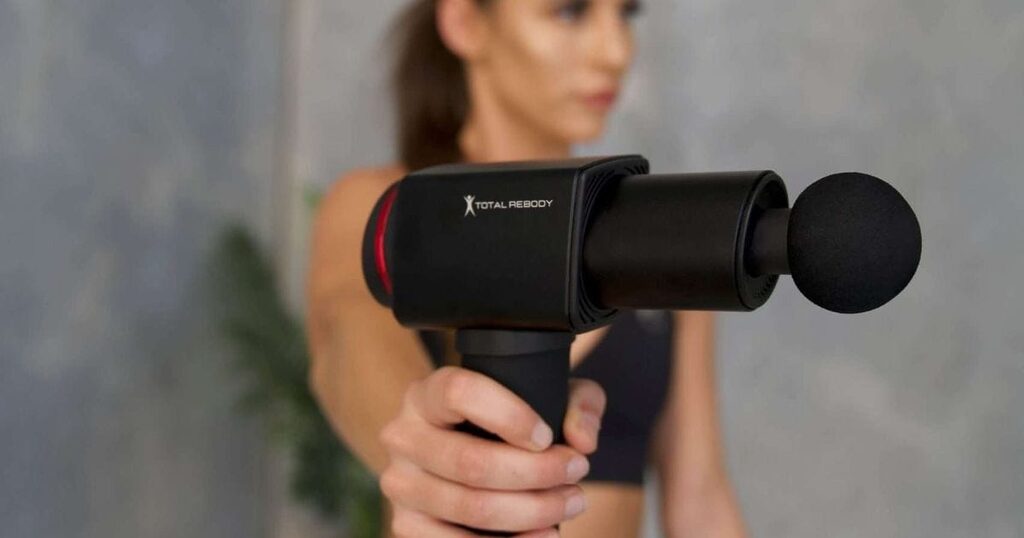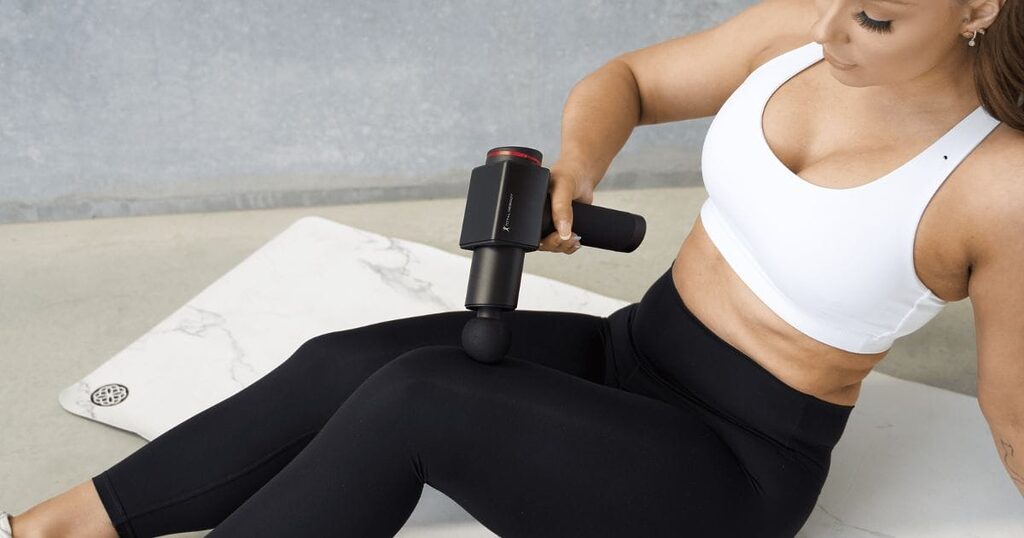
Vibration therapy, a practice with roots stretching back centuries, has witnessed a modern-day resurgence with the advent of the immensely popular massage gun. These handheld devices have taken the market by storm, emerging as go-to tools for muscle recovery and relaxation. Despite their widespread acclaim, the precise science behind their effectiveness often remains shrouded in mystery. So, what exactly unfolds within the body on a physiological level when one wields a massage gun? Our article explores the four key benefits supported by research, shedding light on why these devices are a stellar choice for overall recovery.

Vibration therapy, such as using a massage gun, enhances lymphatic drainage by stimulating the lymphatic system in targeted areas. The rapid percussive motions create mechanical waves that encourage the lymphatic vessels to open and contract, promoting efficient lymph flow. This helps clear out toxins, excess fluids, and cellular waste, which can reduce inflammation and support the body’s natural healing processes. Enhanced lymphatic drainage can lead to improved immune response, reduction in swelling, and faster recovery from exercise-induced muscle soreness and injuries. By supporting the body’s ability to process waste and heal efficiently, vibration therapy is a valuable tool for anyone looking to improve recovery, manage inflammation, and enhance overall health and well-being.
Vibration therapy relaxes muscles by activating the Golgi tendon organs and muscle spindles, which are sensory receptors that help regulate muscle tension and stretch. The rapid percussive vibrations from a massage gun send signals to these receptors, causing the Golgi tendon organs to inhibit muscle contraction and the muscle spindles to adjust their sensitivity. This response decreases muscle tension and promotes relaxation. This is why a massage gun can be perfect tool for tight muscles: they help increase flexibility by allowing the muscles to lengthen and stretch more easily. This combination of decreased tension and improved flexibility can alleviate discomfort, enhance range of motion, and prevent injury. In addition, the soothing vibrations can trigger the release of endorphins, which contribute to overall pain relief and a sense of well-being.
Vibration therapy offers natural pain relief by stimulating the release of endorphins, which are the body’s feel-good hormones that help reduce pain perception. The therapy works by interrupting pain signals sent to the brain, making discomfort feel less intense. As a massage gun’s vibrations target specific muscle groups, they create a soothing sensation that can distract from pain and provide a sense of relaxation. This calming effect not only eases physical discomfort but also enhances overall well-being. The release of endorphins can lead to a mood boost, adding to the therapeutic benefits. By offering immediate relief and promoting the body’s own natural pain management, vibration therapy can be a game-changer for those seeking an effective, drug-free way to alleviate pain.

Leong, H. F., Ng, G. Y., & Chan, S. C. (2019). Effects of Percussive Therapy on Performance, Recovery, and Pain Relief: A Systematic Review. Pilot and Feasibility Studies, 5(1), 99. https://doi.org/10.1186/s40814-019-0514-6
Mörl, F., & Bradl, I. (2013). Lumbar posture and muscular activity while sitting during office work. Journal of Electromyography and Kinesiology, 23(2), 362–368. https://doi.org/10.1016/j.jelekin.2012.10.001
Park, S.-Y., Son, W.-M., Kwon, O.-S., Jung, S.-H., Kim, S.-H., & Yoon, D.-K. (2019). The Immediate Effects of Therapeutic Massage on Pain and Lumbopelvic Angles in Office Workers with Lower Back Pain. Journal of Physical Therapy Science, 31(2), 106–109. https://doi.org/10.1589/jpts.31.106
Roth, T., & Roehrs, T. (2003). Insomnia: Epidemiology, characteristics, and consequences. Clinical Cornerstone, 5(3), 5–15. https://doi.org/10.1016/s1098-3597(03)90031-5
Sweitzer, B. J., Borchardt, R. T., Nack, T. J., & Kirschbaum, K. M. (2006). Handwriting: A tool for examination of motor skills in adults with attention deficit hyperactivity disorder. Journal of Attention Disorders, 9(4), 584–593. https://doi.org/10.1177/1087054705284848